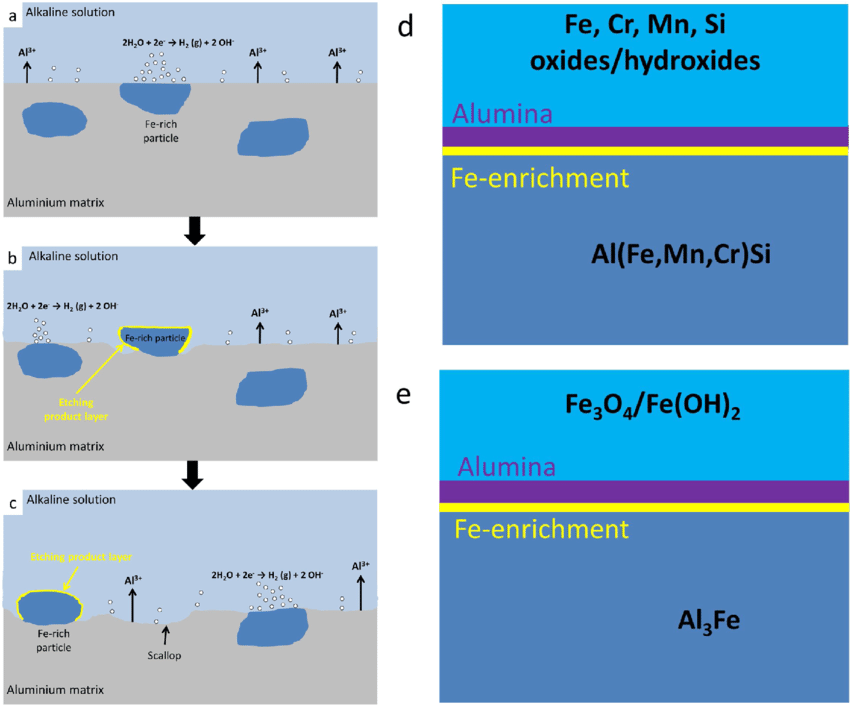
As technology advances, so does our demand for smaller and more intricate electronic devices. Behind these cutting-edge gadgets lies the fascinating world of printed circuit boards (PCBs). Within PCB fabrication, the use of alkaline etchants has revolutionized the process of wet etching. In this blog, we will explore the ins and outs of alkaline etchants, uncovering the technique’s details for employing them in PCB wet etching machines.
What is Alkaline Etchant?
Alkaline etchant is a potent chemical solution utilized in the PCB manufacturing process. Composed mainly of alkaline substances such as sodium hydroxide (NaOH) or potassium hydroxide (KOH), this etchant is specially designed to selectively remove copper or other metallic materials from the PCB substrate. The purpose of this precise removal is to create specific circuit patterns and interconnections on the board.

Schematic diagrams illustrating the progressive alkaline etching process
Image from:https://www.researchgate.net/figure/Schematic-diagrams-illustrating-the-progressive-alkaline-etching-process-a-c-and-the_fig11_346886096
The Technique of Using Alkaline Etchant for PCB Wet Etching Machine:
- Preparing the PCB:
Before delving into the wet etching process, it is essential to ensure that the PCB is thoroughly cleaned and dried. Any contaminants or residues must be removed to guarantee optimal etching results.
- Etchant Composition:
Creating the right alkaline etchant solution is crucial for the success of the wet etching process. The proper concentration of the alkaline substance and any additional additives must be meticulously calculated and mixed. These additives may include stabilizers to control etch rates or improve solution stability.
- Immersion in Alkaline Etchant:
Once the etchant solution is prepared, the PCB is carefully immersed in the solution. For large-scale PCB manufacturing, automated wet etching machines are employed to ensure consistent and uniform etching across the substrate.
- Time and Temperature Control:
The key to achieving precise circuit patterns lies in controlling the etching time and temperature. The duration of immersion and the temperature of the etchant solution must be meticulously regulated to prevent over-etching or under-etching, both of which can lead to defective PCBs.
- Agitation:
In some cases, gentle agitation of the etchant solution is used to enhance the etching process further. Proper agitation ensures the even distribution of the etchant across the PCB surface, leading to uniform results.
- Rinse and Neutralization:
After the etching process is complete, the PCB is thoroughly rinsed with water to remove any remaining etchant solution. Additionally, the PCB may undergo a neutralization step to ensure the complete deactivation of the etchant.
Alkaline etchant has proven to be a game-changer in the world of PCB wet etching. By harnessing the power of this precise chemical solution, PCB manufacturers can create intricate circuit patterns, essential for modern electronic devices. Understanding the technique of using alkaline etchant, from its preparation to its application in wet etching machines, empowers engineers to deliver high-quality, reliable, and innovative PCBs for a myriad of technological applications.
Embrace the magic of alkaline etchant and dive into the realm of endless possibilities in PCB fabrication!
